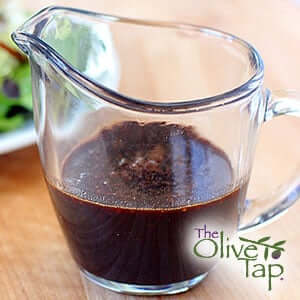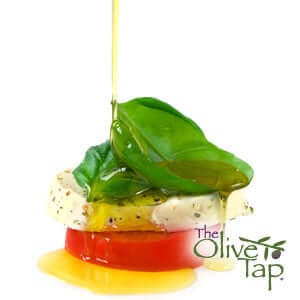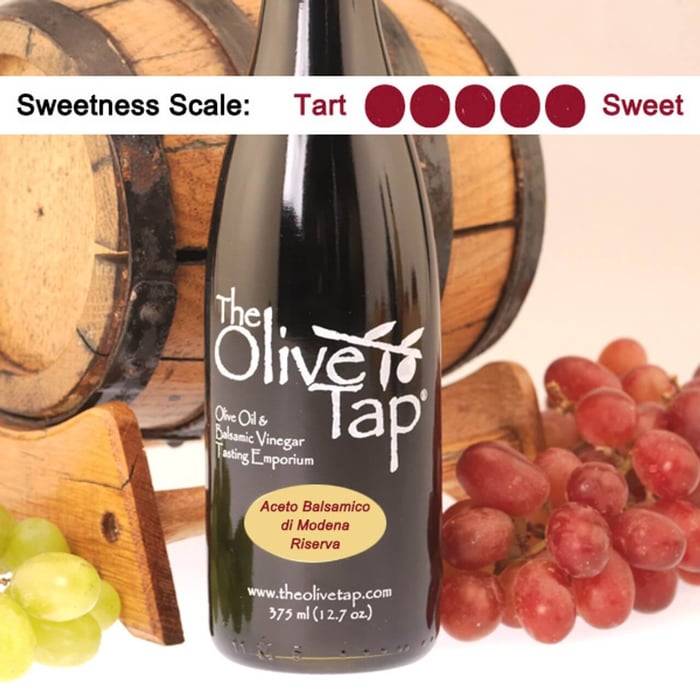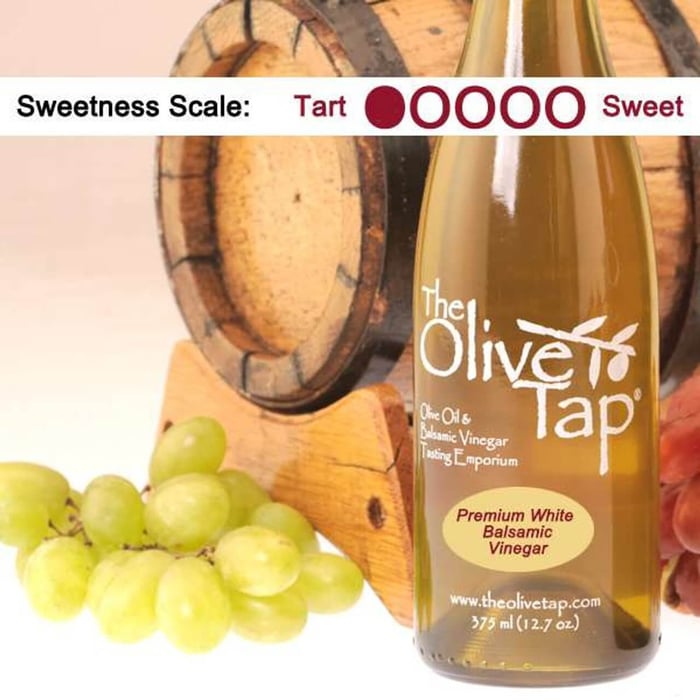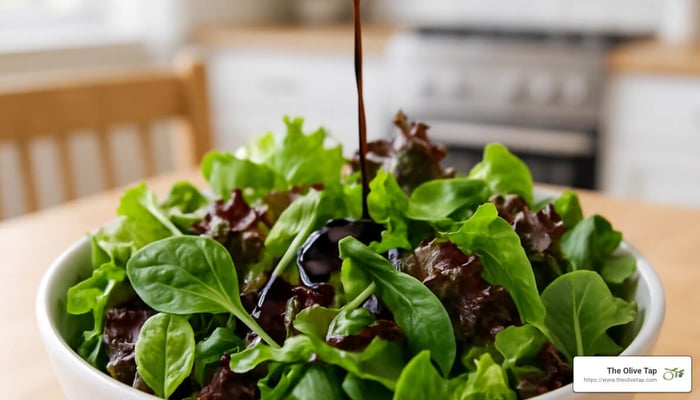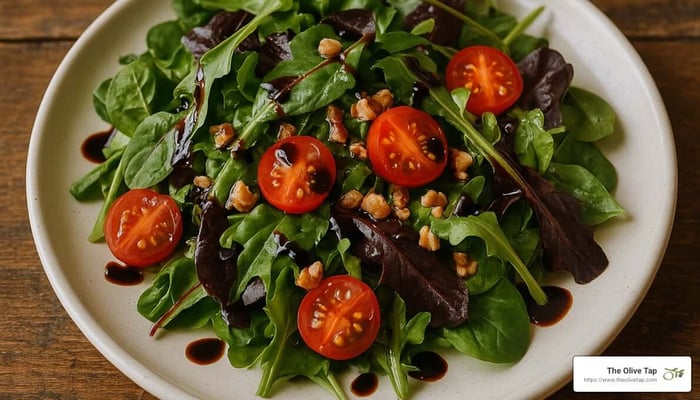Our Blog

Can Balsamic Vinegar Really Lower Your Cholesterol
The Heart-Healthy Secret in Your Pantry
Balsamic Vinegar and Cholesterol have a surprising relationship many heart-conscious food lovers are just finding. If you're looking for natural ways to support healthy cholesterol levels, here's what research suggests about Balsamic Vinegar:
| Balsamic Vinegar Effects on Cholesterol | Research Evidence |
|---|---|
| May lower LDL ("bad") cholesterol | Animal studies show a significant reduction |
| Contains antioxidants to prevent LDL oxidation | Human studies confirm protective effects |
| Can prolong LDL oxidation lag time | Demonstrated in laboratory research |
| Recommended amount: 1-2 tablespoons daily | Safe amount with potential benefits |
The rich, dark sweetness of Balsamic Vinegar isn't just pleasing to your palate—it might also be beneficial for your heart. This Italian condiment, traditionally aged in wooden barrels for years, contains powerful antioxidants and polyphenols that may help combat high cholesterol levels.
Unlike most condiments, quality Balsamic Vinegar contains no fat and relatively little natural sugar. What makes it special is its concentration of plant compounds that target the biochemical processes involved in cholesterol management.
In one notable study published in the Journal of Nutritional Science and Vitaminology, researchers found that Balsamic Vinegar dramatically inhibited LDL oxidation and reduced the formation of foam cells—key factors linked to atherosclerosis development.
Even more promising, when human subjects consumed Balsamic Vinegar, it prolonged LDL oxidation lag time and decreased lipid peroxide levels in their blood, suggesting a protective effect against cholesterol-related damage.
While more extensive human clinical trials are still needed, the current evidence points to Balsamic Vinegar as a potential ally in maintaining heart health when used as part of a balanced diet.
What Is Authentic Balsamic Vinegar and How Is It Made?
Ever wondered what makes that dark, glossy liquid in your pantry so special? Authentic Balsamic Vinegar, or "aceto balsamico tradizionale," isn't just any condiment—it's a centuries-old Italian treasure with a fascinating story.
True Balsamic begins with grape must—freshly pressed juice complete with skins and seeds from Trebbiano or Lambrusco grapes grown in specific Italian regions. Unlike regular vinegars that start with wine, Balsamic's journey begins with these whole grapes, capturing all their natural goodness.
The magic starts when this grape must is slowly simmered in open kettles, concentrating the natural sugars to about 30% in traditional versions. This sweet reduction then starts on a dual fermentation trip: first, natural yeasts transform sugars into alcohol, then special bacteria convert that alcohol into acetic acid—giving balsamic its lovely gentle tang.
But what truly sets Balsamic Vinegar and Cholesterol benefits apart is the remarkable aging process. In Modena and Reggio Emilia—the only regions permitted to produce Authentic Traditional Balsamic under European protection—the concentrated must enters a series of wooden barrels of decreasing size. Each barrel, crafted from different woods like oak, cherry, chestnut, mulberry, and juniper, contributes unique flavor notes to the developing vinegar.
As years pass (at least 12 for Traditional PDO Balsamic), something beautiful happens. A portion evaporates annually—affectionately called the "angels' share" by producers—further concentrating the liquid. Meanwhile, the vinegar moves through progressively smaller barrels, absorbing complex flavors from each wood type. This method is called the Solara Method.
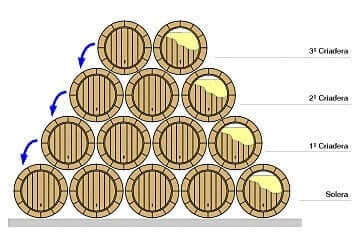
The result? A thick, glossy, deep brown elixir with remarkable complexity—sweet yet tart, with woody notes and an umami depth that transforms both savory dishes and desserts. When you drizzle Authentic Aged Balsamic, it gracefully coats your spoon, hinting at its concentrated goodness.
Traditional vs. Commercial Grades
Not all bottles labeled "Balsamic" deliver the same experience—or potential health benefits. Here's what separates the authentic from the ordinary:
Traditional Balsamic Vinegar (Aceto Balsamico Tradizionale) is the crown jewel, protected by PDO/DOP labels. Aged at least 12 years (sometimes 18 or 25+), it contains only cooked grape must—no additives whatsoever. Produced exclusively in Modena or Reggio Emilia, it boasts a syrupy consistency and deep, naturally sweet flavor. These treasures come in distinctive 100ml bottles and typically range from $75-$200+, reflecting their artisanal craftsmanship.
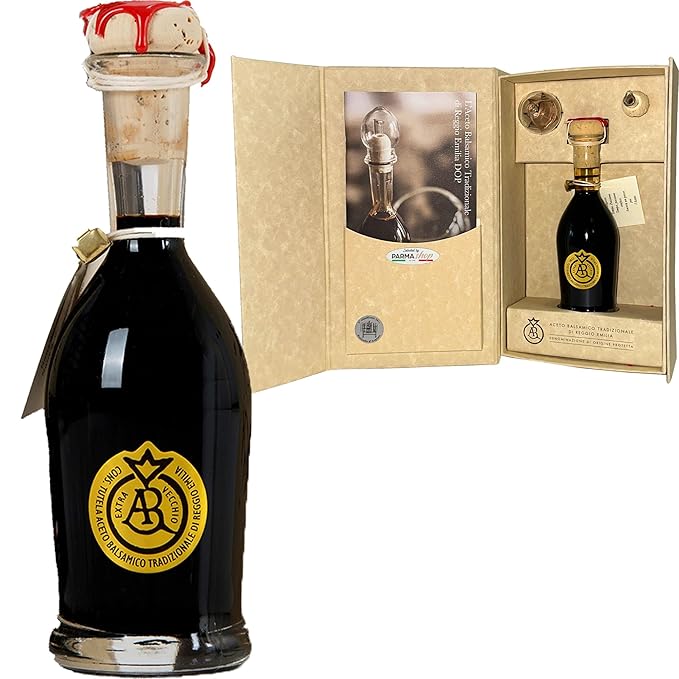
A step down but still excellent is Balsamic Vinegar of Modena (IGP/PGI). Aged at least 2 months (some 3+ years), it contains wine vinegar mixed with at least 20% grape must. Production is supervised within the Modena region, resulting in medium viscosity and a good sweet-sour balance. Expect to pay $15-$50 for these quality bottles. The Olive Tap has a robust line-up of these quality vinegars.
Finally, Commercial Balsamic Vinegar lacks protected status or aging requirements. Often containing wine vinegar, caramel coloring, thickeners, and added sugars, it can be produced anywhere. With a thinner consistency and sharper flavor profile, these $5-$15 bottles are convenient but don't offer the same depth of flavor or potential health benefits. As always, The Olive Tap recommends reading the ingredients carefully.
For those interested in Balsamic Vinegar and Cholesterol benefits, the higher polyphenol content in traditionally aged Balsamics may offer greater potential benefits, though research is still determining whether the price premium translates to significantly improved health effects.
At The Olive Tap, we carefully select our Balsamic Vinegars to ensure you experience the authentic character and potential health benefits of this remarkable condiment—whether you're drizzling it over strawberries or creating a Heart-healthy Salad Vinaigrette.
Nutritional Snapshot and Active Compounds
When you drizzle that glossy, dark Balsamic Vinegar over your salad, you're adding more than just incredible flavor. This Italian treasure packs a surprising nutritional punch in each tablespoon—with minimal caloric impact!
A single tablespoon (15ml) serving contains just about 14 calories, with 2-3 grams of carbohydrates coming from the naturally occurring grape sugars. With virtually no sodium (3-4 mg), zero fat, and zero protein, Balsamic Vinegar makes an excellent flavor-boosting alternative to heavier dressings and sauces.*
What makes Balsamic truly special, though, isn't what it lacks—it's what it contains. That rich, complex flavor comes partly from its approximately 6% acetic acid content, which not only preserves the vinegar but may offer health benefits of its own.
While Balsamic contains trace amounts of minerals like calcium, phosphorus, potassium, magnesium, manganese, and iron, its real nutritional power lies in compounds you won't find on a standard nutrition label.
*Note: Nutritional information varies by the various product manufacturers. It is always best to read the product labels carefully for the most accurate information.
The Star Players Inside the Bottle
Open a bottle of quality Balsamic from The Olive Tap, and you're opening up a concentrated source of beneficial plant compounds. That deep, mahogany color is your first clue to the polyphenol richness within.
Resveratrol, perhaps the most famous compound in grapes, makes its way into Balsamic Vinegar from the grape skins in the must. This powerful antioxidant has been linked to numerous heart-health benefits in research studies.
Quercetin adds another layer of protection. This flavonoid works to reduce inflammation and may help prevent the oxidation of LDL cholesterol—a critical step in protecting your arteries.
Catechins similar to those found in green tea appear in Balsamic Vinegar too. These compounds may help reduce cholesterol absorption in your digestive tract, potentially lowering your overall levels.
The gorgeous deep color comes from anthocyanins, which aren't just pretty—they're potent antioxidants that help fight free radical damage throughout your body.
Don't overlook the humble acetic acid either. Beyond giving Balsamic its tangy personality, it may help regulate blood sugar and improve fat metabolism—both important factors in maintaining healthy cholesterol levels.
Traditional Balsamic Vinegar and quality Balsamic Vinegar of Modena typically contain higher concentrations of these beneficial compounds. The aging process not only develops those complex flavor notes but also concentrates these health-promoting substances and allows for the development of additional bioactive molecules through natural chemical reactions.
Even more interesting, the fermentation process introduces beneficial bacteria that may support gut health—an increasingly recognized factor in overall metabolic wellness, including Balsamic Vinegar and Cholesterol management.
Balsamic Vinegar and Cholesterol: What the Science Says
When it comes to heart health, the latest research on Balsamic Vinegar and Cholesterol offers some genuinely exciting possibilities. While scientists are still solving the full story, what they've finded so far gives us plenty of reasons to keep this flavorful condiment in our pantries.
Let's look at what researchers have uncovered in one particularly noteworthy study published in the Journal of Nutritional Science and Vitaminology. This research examined how Balsamic Vinegar affects two critical processes linked to heart disease: LDL oxidation (when your "bad" cholesterol becomes more harmful) and foam cell formation (a key step in artery plaque buildup).
The findings? Balsamic Vinegar significantly slowed down LDL oxidation through two fascinating mechanisms. First, it directly neutralized harmful free radicals floating around in the bloodstream. Second, it interfered with oxidation processes that typically happen near blood vessel walls. Think of Balsamic as a protective shield around your LDL cholesterol, keeping it from turning into its more dangerous, oxidized form.
Even more impressive was what happened with foam cells. When LDL cholesterol becomes oxidized, it's more likely to be gobbled up by immune cells called macrophages, which then transform into "foam cells" that stick to artery walls. The research showed Balsamic Vinegar reduced this process by:
- Lowering the amount of fat and cholesterol that accumulates inside these immune cells
- Turning down the activity of receptors that normally latch onto oxidized LDL
Animal studies have added weight to these findings. In one study with rabbits fed high-cholesterol diets, those given regular doses of Balsamic Vinegar showed significant drops in both their LDL and total cholesterol compared to rabbits that didn't receive the vinegar.
Human studies, while smaller in scale, have shown equally promising results. When people consumed quality Balsamic Vinegar as part of their diet, researchers observed that their LDL cholesterol remained in its safer, non-oxidized state for longer periods. They also found lower levels of lipid peroxide and lyso-phosphatidylcholine in LDL particles both markers of oxidative damage that can lead to heart disease.
These findings matter because oxidized LDL is significantly more harmful than regular LDL. It's like the difference between a peaceful neighbor and one who stirs up trouble oxidized LDL is much more likely to trigger inflammation and contribute to artery-clogging plaque.
Key Clinical Findings on Balsamic Vinegar and Cholesterol
The science points to several ways Balsamic Vinegar and Cholesterol interact in our bodies. First, as mentioned above, it appears to extend the "lag time" before LDL cholesterol becomes oxidized essentially keeping your cholesterol in its less harmful form longer.
Second, human studies have shown that after consuming Balsamic Vinegar, people have lower levels of oxidative stress markers in their blood. It's as if the vinegar helps clean up some of the cellular "rust" that can damage cholesterol particles.
Third, by calming down the activity of scavenger receptors on immune cells, Balsamic Vinegar may reduce the formation of those troublesome foam cells that contribute to artery plaque. And finally, animal research suggests it might directly lower LDL and total cholesterol levels, though we need larger human studies to confirm this effect.
Most of the research showing benefits used about 1-2 tablespoons of Balsamic Vinegar daily an amount that fits perfectly with normal culinary use and is generally well-tolerated by most people.
While these findings are certainly promising, it's worth noting that many of these studies have been relatively small. Larger, long-term clinical trials would help us better understand exactly how Balsamic Vinegar can be part of a heart-healthy lifestyle.
To learn more from The Olive Tap on the Health Benefits of Balsamic Vinegar, check out this recent blog article, Why Your Salad Needs Balsamic Vinegar - Health Benefits Explained.
Recommended Daily Amounts for Balsamic Vinegar and Cholesterol Control
If you're interested in adding Balsamic Vinegar to your heart-health toolkit, the research suggests some practical guidelines. A reasonable daily amount appears to be 1-2 tablespoons (15-30ml), with studies showing potential benefits starting at as little as 2 teaspoons (10ml).
Rather than taking it straight (which may be a bit hard on your throat and tooth enamel), try incorporating it into your meals in delicious ways. Whisk it with Extra Virgin Olive Oil for a simple salad vinaigrette (aka dressing), use it to marinate chicken or fish before cooking, drizzle it over roasted vegetables, or add a splash to soups for depth of flavor.
Individual responses to any food can vary. If you have existing health conditions like diabetes (since vinegar can affect blood sugar) or digestive issues, it's wise to check with your healthcare provider before significantly increasing your Balsamic Vinegar intake.
The beauty of using Balsamic Vinegar for heart health is that it's not just good medicine it's also a delicious addition to countless dishes. As you'll find in our Recipe Collection at The Olive Tap, the complex, sweet-tart flavor of quality balsamic can transform ordinary meals into extraordinary ones, all while potentially supporting your heart health goals.
Why It Works: Polyphenols, Acetic Acid & More
Ever wondered what makes Balsamic Vinegar and Cholesterol such interesting partners? It's not magic—it's science! The heart-healthy effects of this dark, syrupy condiment come down to some powerful compounds working together in your body.
Those rich, dark hues in your Balsamic aren't just pretty—they signal the presence of polyphenols, nature's antioxidant champions. These plant compounds work overtime to protect your heart by neutralizing harmful free radicals that would otherwise oxidize your LDL cholesterol, making it more dangerous.
But polyphenols do more than just play defense. Research shows they actually help reduce the expression of "scavenger receptors" on your immune cells. Think of these receptors as little docking stations that normally grab onto oxidized LDL, leading to foam cell formation—the beginning stages of artery plaque. By reducing these receptors, Balsamic helps break this harmful cycle.
The tang in your Balsamic comes from acetic acid (about 6%), which isn't just there for flavor. This compound may actually help your body excrete bile acids, forcing it to use up cholesterol to make new ones—a natural way to lower blood cholesterol. Acetic acid also seems to flip switches in your metabolism, increasing how efficiently you burn fats while reducing how much you make.
"Many people don't realize that blood sugar control and cholesterol are closely linked," explains nutrition researchers. The acetic acid in Balsamic helps moderate post-meal blood sugar spikes, which indirectly supports healthier cholesterol levels since insulin resistance often goes hand-in-hand with cholesterol problems.
Your gut bacteria are also getting in on the action. Emerging research suggests Balsamic Vinegar may nurture beneficial gut bacteria that help manage cholesterol. These friendly microbes can actually reduce how much cholesterol your body absorbs from food. The fermentation process that creates Balsamic may offer natural probiotic benefits too—another win for your heart health.
There's even evidence that compounds in Balsamic help prevent excessive blood platelet clumping, which complements cholesterol management for comprehensive heart protection. It's this symphony of effects working together that makes whole foods like Balsamic Vinegar so valuable—they often deliver benefits greater than the sum of their parts.
Comparing Vinegars: Is Balsamic Unique?
While all vinegars bring acetic acid to the table, Balsamic stands out in ways that might make it your cholesterol's best friend.
Balsamic Vinegar leads the pack with its exceptional polyphenol content derived from grape must. These compounds—including quercetin, resveratrol, and anthocyanins—give Balsamic its remarkably high antioxidant activity. Its naturally sweet-tart, complex flavor makes it perfect for drizzling over roasted vegetables or fresh berries.
Apple Cider Vinegar contains moderate levels of polyphenols, primarily chlorogenic acid. While it has similar acetic acid content (5-6%), it does not have the same antioxidant profile of Balsamic. Apple Cider Vinegar, especially when containing the "mother", is very rich in probiotics and the calorie count is lower, around 3 calories per tablespoon.
Red Wine Vinegar is known for its acetic acid, antioxidants and is also low calories, right at 3 calories per tablespoon. So depending upon both your flavor and diet goal, may also be a good fit. It also has good levels of resveratrol and anthocyanins, though not quite matching balsamic's antioxidant punch. Its tangy, grape-like profile works beautifully in marinades and robust salads.
Direct research comparing these vinegars for cholesterol effects is still limited, but we do know that Balsamic shows stronger free-radical fighting ability than many other vinegars in laboratory tests. The traditional aging process creates unique compounds you simply won't find elsewhere, and its concentrated polyphenols may offer superior protection against LDL oxidation.
That said, consistency matters more than perfection. The vinegar you'll actually use regularly is the one that will benefit your health most. At The Olive Tap, we often remind customers both enjoyment and regular use are key—after all, even the finest Balsamic Vinegar won't help your cholesterol sitting unused in your pantry!
How Much Should You Take, and Who Should Avoid It?
While the potential cholesterol benefits of Balsamic Vinegar sound promising, it's important to understand how to use it wisely and when it might not be right for you. Like many good things in life, moderation is key.
Recommended Daily Amounts:
For those interested in the heart-healthy potential of Balsamic Vinegar, most research points to a sweet spot of 1-2 tablespoons daily (15-30ml). Studies suggest that even as little as 2 teaspoons (10ml) might offer some benefits, but it's generally best not to exceed 2 tablespoons per day.
Rather than taking Balsamic Vinegar straight, most experts recommend incorporating it into your meals. This approach not only makes the experience more enjoyable but also helps minimize potential side effects.
Who Should Exercise Caution:
While Balsamic Vinegar is generally safe for most people, it's not ideal for everyone. If you fall into any of these categories, you want to at least chat with your doctor first:
If you struggle with GERD or acid reflux, the acidity in Balsamic Vinegar might trigger uncomfortable symptoms. The same goes for those with gastric ulcers or sensitive digestive systems – that tangy acidity could irritate your stomach lining.
Taking certain medications? Balsamic Vinegar might interact with insulin or diabetes medications (since it can lower blood sugar), certain diuretics, or blood thinners. When in doubt, check with your healthcare provider.
Those with histamine sensitivities should be also be careful. As a fermented food, Balsamic Vinegar naturally contains histamines which might trigger reactions in sensitive individuals.
On dental health, like any acidic vinegar, the acids in the vinegar can have an impact on the enamel over time. And while there's no specific warning against Balsamic Vinegar during pregnancy, expectant mothers should follow the general rule of moderation with any foods.
It's worth noting that not all Balsamic Vinegars are created equal. Commercial varieties with added sugars or caramel coloring probably won't offer the same benefits as traditional or higher-quality products. If you're watching your sugar intake, take a moment to check those labels.
Side Effects & Safe Use Tips
Even this ancient condiment can cause some undesirable if not used properly. Here's what to watch for and how to enjoy Balsamic Vinegar on a daily basis.
You might experience throat irritation or a burning sensation, especially if consuming it straight. Some people notice digestive discomfort or acid reflux after consuming vinegar products. Long-term, undiluted use could potentially contribute to tooth enamel erosion. In rare cases with excessive consumption, Balsamic Vinegar might affect potassium levels or interact with medications.
To enjoy Balsamic Vinegar safely, try these simple strategies:
Dilute it properly by mixing it with your favorite EVOO or Flavored Olive Oil or incorporating it into recipes rather than consuming it straight. After enjoying vinegar-rich foods, protect your teeth by rinsing your mouth with water, but wait about 30 minutes before brushing (brushing immediately can actually damage enamel that's been softened by acid).
If you have diabetes, monitor your blood sugar levels carefully when adding Balsamic Vinegar to your routine. The acetic acid may improve insulin sensitivity, potentially requiring adjustments to your medication.
For beginners, start small with just a teaspoon daily and gradually increase as your body adjusts. If you're using more concentrated forms, consider using a straw to minimize contact with your teeth.
Whenever possible, choose high-quality products like those offered by The Olive Tap. Traditional or premium Balsamic Vinegars not only taste better but often have better health profiles than commercial varieties loaded with additives.
While Balsamic Vinegar may offer some heart-healthy benefits, it should complement—not replace—conventional medical treatments for high cholesterol. As with any dietary change, it's always wise to keep your healthcare provider in the loop, especially if you're managing existing health conditions or taking medications.
Tips to Add Balsamic to a Heart-Healthy Plate
Let's be honest—eating for heart health shouldn't feel like a chore. The good news? Balsamic Vinegar and Cholesterol management can go hand-in-hand deliciously. This dark, complex elixir isn't just good for you—it's genuinely delightful to eat!
The beauty of Balsamic Vinegar lies in its versatility. Simply start with a classic vinaigrette— whisk together three parts** Extra Virgin Olive Oil with one part Balsamic Vinegar, add a pinch of salt and pepper, and perhaps some minced garlic or fresh herbs. This creates a double-duty vinaigrette (dressing) that delivers both the benefits of balsamic and the heart-healthy monounsaturated fats from the EVOO. Your salads will thank you! Please check out our Video on Making the Perfect Vinaigrette.
**Note: For a lower calorie variation, you can use 2 Parts EVOO to 1 Part Vinegar or a 1:1 Ratio. The less oil results in lower calories and more flavor impacts from the vinegar.When roasting vegetables (think Brussels sprouts, asparagus, or bell peppers), try drizzling a bit of Balsamic during the last few minutes of cooking. The heat works magic, reducing the vinegar into a light, sweet glaze that transforms ordinary veggies into something company-worthy—no butter needed! Check out a few of our Veggie Recipes.![]()
Here's something that might surprise you—Balsamic Vinegar loves fruit! A light drizzle over strawberries, peaches, or figs brings out their natural sweetness while adding sophisticated depth. It's a great way to make a simple fruit dessert feel special without adding a speck of refined sugar. Try it with Peaches, for an easy and fun Grilling Recipe.
Tired of dry chicken breast? Create a heart-healthy marinade using Balsamic as your acid component. The vinegar tenderizes the poultry while infusing flavor—try mixing it with a touch of olive oil, garlic, herbs, and a spoonful of Dijon mustard. Your proteins will never be boring again.
For those times when you're craving richness, try reducing Balsamic until it becomes slightly syrupy—this reduction can stand in for butter or heavy sauces, adding a luxurious finish to lean proteins with far fewer calories. Try adding a few drops to brighten tomato soups or vegetable stews—it adds complexity without extra sodium.
The Olive Tap offers a wonderful selection of high-quality Balsamic Vinegars perfect for these applications, from traditionally aged varieties to fun flavor-infused options to make heart-healthy eating feel like a treat, not a treatment.
Quick Recipes & Serving Ideas
Ready to put Balsamic to work in your kitchen? Here are five simple, cholesterol-friendly dishes the Team at The Olive Tap makes regularly:
Balsamic Berry Breakfast Bowl combines Greek yogurt with fresh berries, a teaspoon each of balsamic and honey, topped with chopped walnuts. It's a morning power combo of probiotics, antioxidants, and omega-3s that feels more like dessert than breakfast. For less sugar, skip the honey!
For lunch, nothing beats a Balsamic Caprese Salad—layers of sliced tomatoes, fresh mozzarella (in moderation), and basil leaves drizzled with Balsamic and Extra Virgin Olive Oil. The lycopene from tomatoes works alongside balsamic's benefits for a heart-happy midday meal. Here's one of The Olive Tap's recipes using Premium White Balsamic Vinegar, Mario's Caprese Salad.
When dinner rolls around, try Balsamic Glazed Salmon. Just brush a salmon fillet with a mixture of Balsamic, a touch of maple syrup, and minced garlic before baking. The omega-3 fatty acids in salmon complement balsamic's antioxidants beautifully. Here's a creative and flavorful recipe, Glazed Blackberry Ginger Salmon Filets.
For a hearty side, Balsamic Lentil Salad combines cooked lentils with crunchy diced vegetables and a simple Balsamic-Olive Oil dressing. The plant protein and fiber actively help lower cholesterol while keeping you satisfied.
And don't forget your greens! Balsamic Roasted Brussels Sprouts transform the humble vegetable into a caramelized delight. The cruciferous vegetables support liver function—crucial for cholesterol processing—while the balsamic adds depth without calorie overload. Check out this recipe for a hearty fall or winter side dish, Glazed Brussel Sprouts with Apples & Prosciutto.
When it comes to Balsamic, a little goes a long way. Use measuring spoons until you're familiar with appropriate portions, especially with high-quality aged varieties. Their concentrated flavor means you'll need less to make a big impact.
Flavor Meets Function: Choosing Quality
Not all Balsamic Vinegars are created equal—especially when we're talking about potential health benefits. The polyphenol content, which may be responsible for many of the cholesterol-related benefits, is typically higher in traditionally produced and aged Balsamics.
When shopping for Balsamic with health in mind, look for authenticity indicators. The gold standard is "Aceto Balsamico Tradizionale di Modena DOP" or "Aceto Balsamico Tradizionale di Reggio Emilia DOP"—though these can be quite pricey. With this style of Balsamic Vinegar, details are often provided on the exact aging length, often 12, 18 or 25+ years.
For everyday use, "Aceto Balsamico di Modena IGP" offers good quality at a more accessible price point. Shoppers can find such quality Balsamic Vinegars at gourmet specialty shops and markets including those found at The Olive Tap.
Check the ingredient list too—"grape must" or "cooked grape must" should lead the parade. Fewer added ingredients generally signals higher quality. It is always best to avoid products with caramel coloring or thickeners—they're masquerading as the real thing without offering the same benefits.
Quality Balsamic also has a distinctive appearance—it often coats the inside of the bottle when swirled, with a deep, rich brown color rather than a thin, watery look. Thicker style Balsamic Vinegars are also available and are often Balsamics which have been cooked longer (reduced) for a syrup-type consistency. The Olive Tap's Aceto Balsamic di Modena Riserva fits into this category.
The Olive Tap specializes in exactly these kinds of high-quality vinegars, including Aceto Balsamic di Modena, 4 Leaf Quality that checks all these quality boxes. Yes, better quality often means higher price, but you'll typically use less of a well-aged Balsamic due to its concentrated flavor, making it surprisingly economical in the long run—and potentially better for your heart.
FAQs
Does heating destroy the cholesterol-lowering benefits?
Many home cooks wonder if they'll lose all the good stuff when they heat their Balsamic Vinegar. Good news! The polyphenols and antioxidants in Balsamic Vinegar and Cholesterol management aren't as delicate as you might think.
When you simmer Balsamic into a glaze or add it to a warm dish, most of its beneficial properties stick around. The acetic acid – that tangy component that makes vinegar, well, vinegar – holds up perfectly fine to heat.
To get the most heart-healthy goodness from your Balsamic, try adding it toward the end of cooking when possible. Try it on both cold salads and in warm dishes for variety. And when making those delicious Balsamic reductions that coat the spoon just right, gentle heat works better than a rolling boil anyway – both for flavor and preserving those beneficial compounds. For those looking for convenience, versus having to create a reduction, check out Aceto Balsamic di Modena Riserva, it's a perfect reduction in one fantastic bottle!
Interestingly, some cooking methods might actually make certain antioxidants more available to your body. The heat breaks down cell walls, releasing compounds that might otherwise have passed through your system without being absorbed. It's nature's way of making health a bit more accessible!
Can I combine balsamic vinegar with statins safely?
If you're taking statins to manage cholesterol, adding a splash of Balsamic Vinegar for Cholesterol Management can generally go hand-in-hand without problems. But there are a few things worth knowing.
First, think of Balsamic as your supporting actor, not the star of the show. It should complement your prescribed medications – never replace them. Your statins are doing important work!
While there aren't documented negative interactions between statins and Balsamic Vinegar in medical literature, vinegar can influence blood sugar levels. Since some statins may also affect glucose metabolism, keeping an eye on your blood sugar makes sense if you have diabetes or pre-diabetes.
Always chat with your doctor about dietary changes when you're on prescription medications. The docs know your specific health situation and can give you personalized advice. They might even encourage adding heart-healthy options like Balsamic Vinegar alongside your statin therapy, as they work through different mechanisms and could provide complementary benefits.
If you do start regularly enjoying Balsamic Vinegar with your statin regimen, consider checking your cholesterol levels a bit more frequently at first, just to see how your body responds to this tasty addition.
Are white balsamic and dark balsamic equally effective?
Is there a battle of the Balsamics? The exact degree of effectiveness on cholesterol may vary slightly between White and Dark Balsamic Vinegar. While dark Balsamic Vinegar may offer a slightly higher concentration of antioxidants, both the White and Dark varieties can contribute to overall health and potentially help manage cholesterol levels.
Commonly referred to as "Balsamico Condimento", White Balsamic Vinegars are refreshingly tart-sweet. Perfect for culinary applications where a lighter colored vinegar is desired. White Balsamic starts with white Trebbiano grape pressings (must) which are simmered (at a low temperature) with white wine vinegar for hours until it thickens. White Balsamic Vinegar is commonly only aged for a short periods and uses lighter wood barrels or stainless steel for either aging or storage.
White Balsamic still contains acetic acid and some polyphenols – so it's not devoid of potential benefits! While specific studies comparing the cholesterol-lowering effects between the two varieties are lacking, the higher polyphenol content in traditional dark balsamic suggests it may offer slightly greater potential benefits.
If your primary goal is cholesterol management, reaching for that bottle of traditional dark Balsamic, especially quality and aged varieties like those offered by The Olive Tap, might be your best bet. However, consistency matters most – if you prefer the taste (or look) of White Balsamic and will use it more regularly, that's a perfectly reasonable approach too. The Balsamic you'll actually enjoy using is always the best choice! Check out The Olive Tap's White Balsamic Vinegar line-up.
Conclusion
The relationship between Balsamic Vinegar and Cholesterol management offers a delightful example of where good taste and good health find common ground. While it's certainly not a miracle cure, the evidence paints an encouraging picture of how this rich, complex condiment might play a supporting role in your heart health journey.
When looking at what the research tells us, several important points stand out. First, Balsamic Vinegar seems to work its magic primarily by preventing LDL cholesterol from becoming oxidized and by stopping the formation of foam cells—both critical factors in keeping your arteries healthy and clear. It's like having a tiny guardian in your salad dressing (aka vinaigrette)!
What makes Balsamic Vinegar special is the teamwork happening inside the bottle. The polyphenols, antioxidants, and acetic acid don't work alone—they function together, creating benefits greater than the sum of their parts. This synergy might explain why whole foods often outperform isolated supplements.
Let's keep the expectations reasonable, though. While animal studies show promising direct effects on cholesterol numbers, human research currently focuses more on those protective mechanisms rather than dramatic drops in cholesterol readings. Think of Balsamic Vinegar as a helpful ally, not a replacement for medications or other heart-healthy habits.
Quality truly matters when it comes to potential health benefits. Those traditionally aged Balsamic Vinegars from Modena, with their complex flavor profiles and rich histories, likely contain higher concentrations of beneficial compounds than mass-produced varieties with caramel coloring and additives. Your taste buds and your heart may thank you for choosing well.
Moderation remains the wise approach. The studies pointing to benefits typically involve modest daily consumption—about 1-2 tablespoons. There's no evidence that downing half a bottle provides additional benefits (and your stomach would probably protest!).
The beauty of Balsamic Vinegar is how easily it slides into your daily meals—a drizzle on fresh strawberries, whisked into a vinaigrette, or reduced into a glaze for roasted vegetables. These simple pleasures make it a sustainable addition to heart-healthy eating patterns like the Mediterranean diet.
The Olive Tap's thoughtfully curated selection of Balsamic Vinegars provides a wonderful gateway to exploring both the culinary delights and potential health benefits. From traditionally aged varieties to creative flavor-infused options, Balsamic Vinegar offers exceptional taste alongside possible heart health benefits.
Dietary approaches to cholesterol management work best as part of a bigger picture. Regular physical activity, maintaining a healthy weight, avoiding tobacco, and partnering with healthcare providers to monitor your cardiovascular health all play crucial roles in the symphony of heart health.
By making small, enjoyable changes like incorporating quality Balsamic Vinegar into your meals, you're not just following another health tip—you're embracing a delicious tradition that might just help your heart beat strong for years to come. And isn't that the sweetest reduction of all?
References:
https://pubs.rsc.org/en/content/articlelanding/2020/fo/c9fo02630d
https://pubmed.ncbi.nlm.nih.gov/21422711/
https://pmc.ncbi.nlm.nih.gov/articles/PMC6523695/#:~:text=Taking%20the%20FRAP%2C%20TEAC%2C%20TPC,processes%20%5B22%2C23%5D
https://www.prevention.com/health/a61997131/apple-cider-vinegar-side-effects/#:~:text=Medication%20interaction,or%20bruising%2C%E2%80%9D%20Routhenstein%20concludes.

